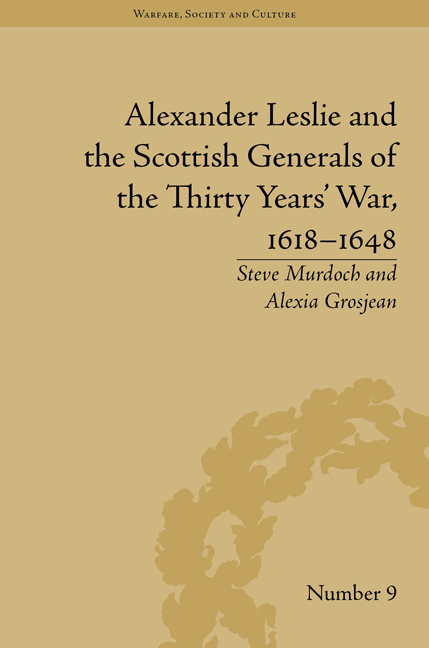Book contents
- Frontmatter
- CONTENTS
- Dedication
- Acknowledgements
- Abbreviations
- Stylistic Conventions
- Introduction
- 1 Scotland's Indigenous Military Cultures
- 2 The Scottish Military Diaspora
- 3 The Thirty Years' War Campaigns: Stralsund to Prague, 1628–35
- 4 Alexander Leslie and the Army of the Weser, 1635–9
- 5 The Home Front: Leslie, Ruthven and the Bishops' Wars, 1638–41
- 6 The Scottish ‘Veteran Generals’ in England, 1642–7
- 7 Going Full Circle: The New Scottish Command in Europe, 1639–48
- Conclusion
- Appendix
- Notes
- Works Cited
- Index
6 - The Scottish ‘Veteran Generals’ in England, 1642–7
- Frontmatter
- CONTENTS
- Dedication
- Acknowledgements
- Abbreviations
- Stylistic Conventions
- Introduction
- 1 Scotland's Indigenous Military Cultures
- 2 The Scottish Military Diaspora
- 3 The Thirty Years' War Campaigns: Stralsund to Prague, 1628–35
- 4 Alexander Leslie and the Army of the Weser, 1635–9
- 5 The Home Front: Leslie, Ruthven and the Bishops' Wars, 1638–41
- 6 The Scottish ‘Veteran Generals’ in England, 1642–7
- 7 Going Full Circle: The New Scottish Command in Europe, 1639–48
- Conclusion
- Appendix
- Notes
- Works Cited
- Index
Summary
(Alexander Leslie) hath evidentlie manifested his grave wisdome, vigilancie and indefatigable panes, constant fidelitie, gallant conduct and everie gift desireable in ane great leader of armies to the kingdomes great satisfaction and his awne perpetuall honor
New decisions and challenges faced Alexander Leslie, now first Earl of Leven, brought on by the outbreak of the Irish Rebellion in 1641. His hopes of taking an army of 10,000 men to Germany in support of Elizabeth of Bohemia were dashed when that force was instead sent to Ireland. Their stated objective was to protect their Protestant brethren from the immediate threat posed by the Confederate Irish, who were believed to have massacred over 100,000 of their number. The first expeditionary troops under Major General Robert Monro arrived in April 1642; a second cohort of soldiers, composed largely of Campbells, was organized within months. By August the total force stood at just over 11,000, with Leven at its head. However, after a relatively brief sojourn in Ireland, Leslie returned to Scotland to serve on the various committees negotiating an ever closer alliance with the English Parliament, the body from which any British power in Ireland notionally derived. In the meantime, command of the Covenanter forces was again devolved to Monro. At the same juncture, and to complicate matters further, the English Parliament raised its own series of grievances against Charles I.
- Type
- Chapter
- Information
- Publisher: Pickering & ChattoFirst published in: 2014

